Let's see if I can explain this, or maybe after reading this you can come up with a better way to explain it.
The first thing to realize is WebGL requires clipspace coordinates. They go -1 <-> +1 in x, y, and z. So, a perspective matrix is basically designed to take the space inside the frustum and convert it to clipspace.
If you look at this diagram

we know that tangent = opposite (y) over adjacent(z) so if we know z we can compute y that would be sitting at the edge of the frustum for a given fovY.
tan(fovY / 2) = y / -z
multiply both sides by -z
y = tan(fovY / 2) * -z
if we define
f = 1 / tan(fovY / 2)
we get
y = -z / f
note we haven't done a conversion from cameraspace to clipspace. All we've done is compute y at the edge of the field of view for a given z in cameraspace. The edge of the field of view is also the edge of clipspace. Since clipspace is just +1 to -1 we can just divide a cameraspace y by -z / f to get clipspace.
Does that make sense? Look at the diagram again. Let's assume that the blue z was -5 and for some given field of view y came out to +2.34. We need to convert +2.34 to +1 clipspace. The generic version of that is
clipY = cameraY * f / -z
Looking at `makePerspective'
function makePerspective(fieldOfViewInRadians, aspect, near, far) {
var f = Math.tan(Math.PI * 0.5 - 0.5 * fieldOfViewInRadians);
var rangeInv = 1.0 / (near - far);
return [
f / aspect, 0, 0, 0,
0, f, 0, 0,
0, 0, (near + far) * rangeInv, -1,
0, 0, near * far * rangeInv * 2, 0
];
};
we can see that f in this case
tan(Math.PI * 0.5 - 0.5 * fovY)
which is actually the same as
1 / tan(fovY / 2)
Why is it written this way? I'm guessing because if you had the first style and tan came out to 0 you'd divide by 0 your program would crash where is if you do it the this way there's no division so no chance for a divide by zero.
Seeing that -1 is in matrix[11] spot means when we're all done
matrix[5] = tan(Math.PI * 0.5 - 0.5 * fovY)
matrix[11] = -1
clipY = cameraY * matrix[5] / cameraZ * matrix[11]
For clipX we basically do the exact same calculation except scaled for the aspect ratio.
matrix[0] = tan(Math.PI * 0.5 - 0.5 * fovY) / aspect
matrix[11] = -1
clipX = cameraX * matrix[0] / cameraZ * matrix[11]
Finally we have to convert cameraZ in the -zNear <-> -zFar range to clipZ in the -1 <-> + 1 range.
The standard perspective matrix does this with as reciprocal function so that z values close the the camera get more resolution than z values far from the camera. That formula is
clipZ = something / cameraZ + constant
Let's use s for something and c for constant.
clipZ = s / cameraZ + c;
and solve for s and c. In our case we know
s / -zNear + c = -1
s / -zFar + c = 1
So, move the `c' to the other side
s / -zNear = -1 - c
s / -zFar = 1 - c
Multiply by -zXXX
s = (-1 - c) * -zNear
s = ( 1 - c) * -zFar
Those 2 things now equal each other so
(-1 - c) * -zNear = (1 - c) * -zFar
expand the quantities
(-zNear * -1) - (c * -zNear) = (1 * -zFar) - (c * -zFar)
simplify
zNear + c * zNear = -zFar + c * zFar
move zNear to the right
c * zNear = -zFar + c * zFar - zNear
move c * zFar to the left
c * zNear - c * zFar = -zFar - zNear
simplify
c * (zNear - zFar) = -(zFar + zNear)
divide by (zNear - zFar)
c = -(zFar + zNear) / (zNear - zFar)
solve for s
s = (1 - -((zFar + zNear) / (zNear - zFar))) * -zFar
simplify
s = (1 + ((zFar + zNear) / (zNear - zFar))) * -zFar
change the 1 to (zNear - zFar)
s = ((zNear - zFar + zFar + zNear) / (zNear - zFar)) * -zFar
simplify
s = ((2 * zNear) / (zNear - zFar)) * -zFar
simplify some more
s = (2 * zNear * zFar) / (zNear - zFar)
dang I wish stackexchange supported math like their math site does :(
so back to the top. Our forumla was
s / cameraZ + c
And we know s and c now.
clipZ = (2 * zNear * zFar) / (zNear - zFar) / -cameraZ -
(zFar + zNear) / (zNear - zFar)
let's move the -z outside
clipZ = ((2 * zNear * zFar) / zNear - ZFar) +
(zFar + zNear) / (zNear - zFar) * cameraZ) / -cameraZ
we can change / (zNear - zFar) to * 1 / (zNear - zFar) so
rangeInv = 1 / (zNear - zFar)
clipZ = ((2 * zNear * zFar) * rangeInv) +
(zFar + zNear) * rangeInv * cameraZ) / -cameraZ
Looking back at makeFrustum we see it's going to end up making
clipZ = (matrix[10] * cameraZ + matrix[14]) / (cameraZ * matrix[11])
Looking at the formula above that fits
rangeInv = 1 / (zNear - zFar)
matrix[10] = (zFar + zNear) * rangeInv
matrix[14] = 2 * zNear * zFar * rangeInv
matrix[11] = -1
clipZ = (matrix[10] * cameraZ + matrix[14]) / (cameraZ * matrix[11])
I hope that made sense. Note: Most of this is just my re-writing of this article.




